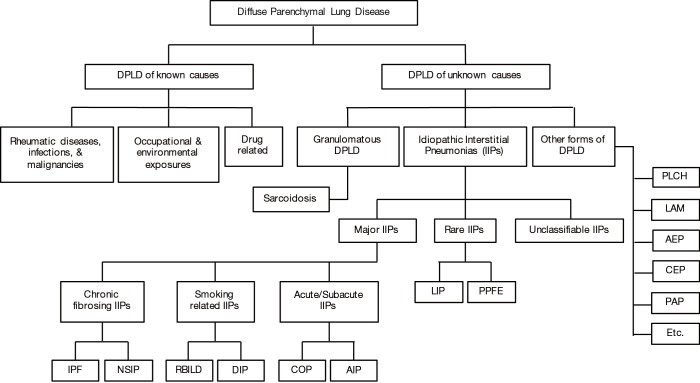Figure 1.
Diffuse parenchymal lung disease. Diffuse parenchymal lung diseases constitute an entity that encompasses more than 200 diseases of known and unknown etiologies. Hence, a thorough history, and a detailed physical exam are essential to rule out an underlying cause. Chronic hypersensitivity pneumonitis, rheumatoid arthritis, and IPF for example may all have a UIP pattern on pathology, but management and prognosis are certainly different. NSIP can be idiopathic as well as connective tissue disease related. LIP is mostly associated with other diseases (rheumatic, infectious, immunodeficiency), but can be idiopathic in rare cases. . Family history may be helpful since several familial associations have been described. Unclassifiable IIPs should be managed based on the most probable diagnosis after a multidisciplinary discussion. AEP, acute eosinophilic pneumonia; AIP, acute interstitial pneumonia; CEP, chronic eosinophilic pneumonia; COP, cryptogenic organizing pneumonia; DIP, desquamative interstitial pneumonia; DPLD, diffuse parenchymal lung disease; IIP, idiopathic interstitial pneumonia; IPF, idiopathic pulmonary fibrosis; LAM, lymphangioleiomyomatosis; LIP, lymphocytic interstitial pneumonia; NSIP, nonspecific interstitial pneumonia; PAP, pulmonary alveolar proteinosis; PLCH, pulmonary Langerhans cell histiocytosis; PPFE, pleuroparenchymal fibroelastosis; RBILD, respiratory bronchiolitis interstitial lung disease.

